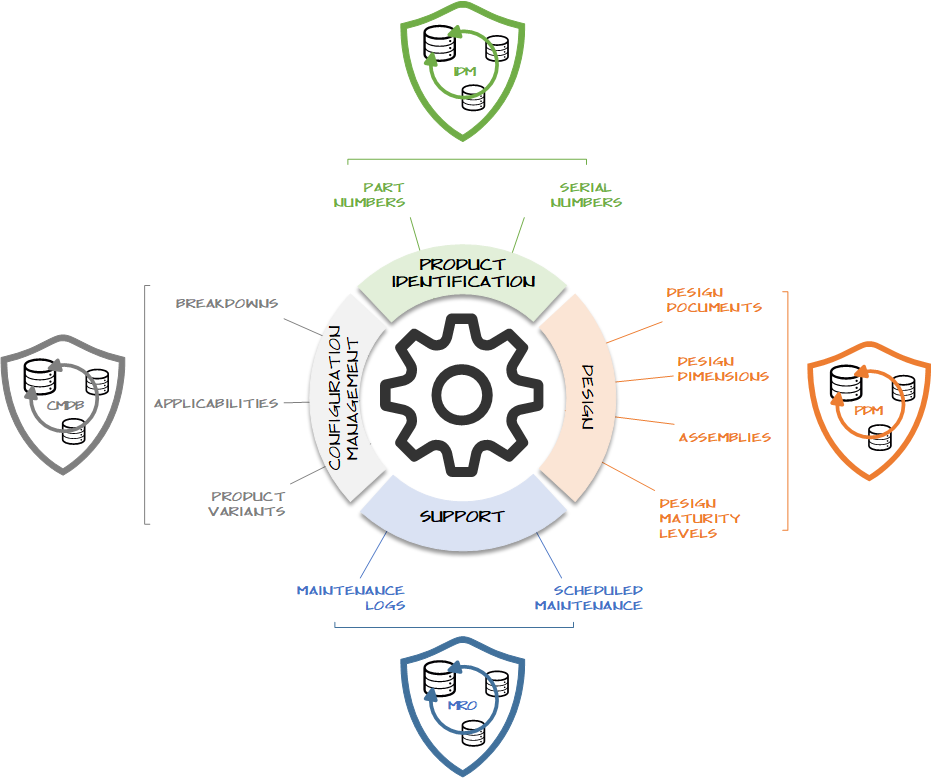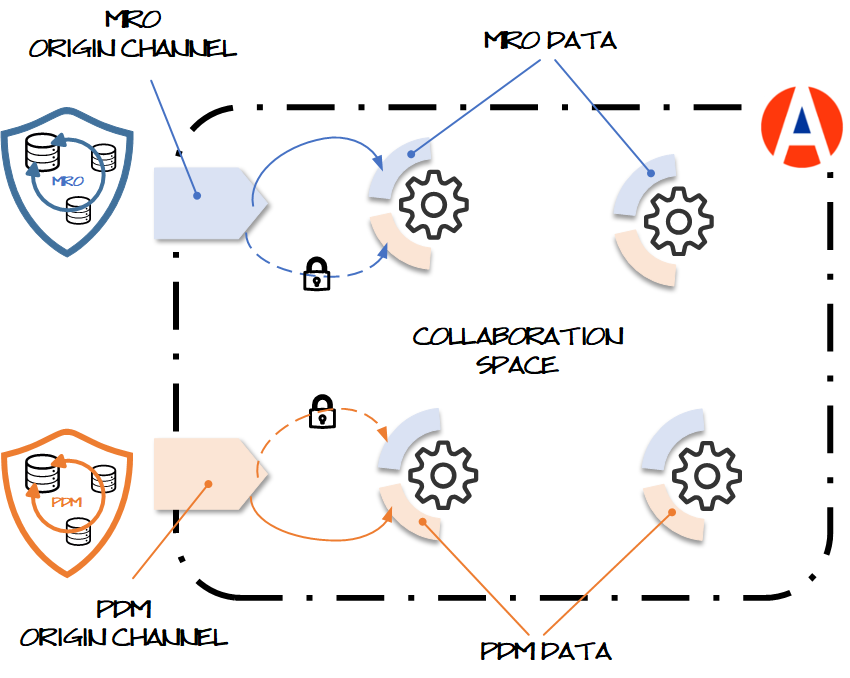UoI and Origin Concept
This article gives an overview description of the concept of Origin in ShareAspace. This is basically the way to manage the source system of the information which is created or imported in the ShareAspace store.
In the Product Lifecycle Data Management domain, it is very common to find that the product information is scattered across several discipline centric information systems.
An item might exist in several information systems and some are actually the authoring and trust source of a given part of the item information.
- an
Identification Data Management(IDM) system might be the master for identifying the item and its versions, - a
Product Data Management(PDM) system might be the master of the design information of the item revisions, - a
Configuration Management Data Base(CMDB) system might be the master of the all variant configurations of the product, - a
Maintenance, Repair & Overhaul(MRO) system might be the master of the maintenance follow up information.
Many other information systems might also be involved in the information lifecycle of the item, such as CAD systems, ERP systems, simulation systems, etc.

With this kind of setup, the various elements of information about the item need to be protected according to the appropriate source system: i.e. the Origin. The aim is to prevent data from other systems overwriting that from the Origin system.
Important
This concept relies on the following foundation principles:
- The information is mastered in only one information system at the time
- That information system is the only place where the data can be modified
In other domains this concept might be called Master Data Management (MDM), a term with a lot of different definitions.
To avoid confusion, and no matter what can be read elsewhere, in ShareAspace it means that any Unit Of Information (UoI) has at all points in time an owner and an origin associated that is used to control modification access right rules for the UoI.
For instance, any UoI that has its origin set to something else than ShareAspace is ONLY available for read access to the participants that have been granted an access by the owner.
Origin in the ShareAspace Model
The origin concept is represented in the ShareAspace model by the object called OriginSystem which is identified by an URI (Uniform Resource Identifier ) and has a human readable name.
It is associated as a meta data information with any object that has the capability to hold an origin (i.e. any subtypes of ManagedObject and AbstractDefinition).

Different definitions of a version can have different origins. This allows for different systems to master information from different views. It can also master data from different systems in the same view.
The latter is achieved by using system specific application contexts that share the same application and life cycle but use different Origins on the context itself.
Note
Summary
The way to distinguish different sources of information for the same item and to attach the correct characteristic to the correct source is to make use of the Master-Version-Definition (MVD) pattern of the ShareAspace model.
A UoI (ManagedObject) which is following the MVD pattern will have the possibility to hold information coming from different origins. The different business domains and lifecycle stages are simply represented using different definitions to which the originating system and the corresponding characteristics are attached.
As opposed, a UoI (ManagedObject) which is not following the MVD pattern is considered in ShareAspace as coming from a single originating system.
Security, Collaboration and Origin
According to the principle stated at the beginning of this article, the information can be authored in only one system at a time and modification is only allowed in the system that is set as the origin.
The consequence of that principle is that any UoI with an external origin will be locked for modifications and only available for reference in a ShareAspace Space.
The way to perform modifications on such an information in a ShareAspace space is to import modified data through a data exchange job channel that is "representing" the external origin. This prevents data inconsistency between the external origin and the data in the ShareAspace space.
The following diagram shows 2 external origin systems (MRO and PDM) and corresponding configured data exchange job channels in a ShareAspace space. The space holds data on multiple parts with some data coming from the MRO and the PDM origin.
- The MRO Origin Channel can modify the MRO data on the product information but is locked for modifications on the PDM data.
- Respectively, the PDM Origin Channel can modify the PDM data on the project information but is locked for modifications on the MRO data.

Important
When using ShareAspace as a Secure Collaboration hub with the capability of securing
the data coming from various sources (i.e. using the Origin feature), care needs to be
taken over the order in which the data has to be initialized in a ShareAspace space.
Further Facts
DataExchange Configuration
Information on how to setup an origin specific data channel can be found in the configuration section of DataExchange jobs.
SoftType Configuration
When configuring SoftTypes of a PLM ManagedObject in a space template, the origin is mandatory. It is good practice to assign it to an instance of an OriginatingSystem SoftType or leave it open as a reference port.
The SoftTypes that have an origin set to something else than the ShareAspace space can only be updated via an import and cannot be modified in the ShareAspace User Interface.